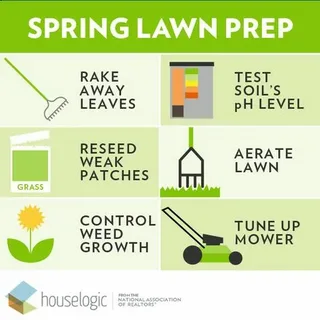Consider implementing a thick layer of mulch around plants and flower beds. Wood chips, straw, or grass clippings can suppress the emergence of unwanted plants by blocking sunlight and retaining moisture for your desired flora. Regular application, particularly in spring, enhances its effectiveness.
Another technique involves the use of boiling water, which can be poured directly onto unwanted plants. This method causes immediate damage, effectively eliminating unwelcome growth without harming surrounding soil quality. It’s particularly useful for small patches or individual plants.
Introduce beneficial ground covers that compete for resources, making it difficult for unwanted plants to thrive. Varieties such as clover or creeping thyme can assist in creating a dense carpet that outcompetes less desirable species.
Regular hand-pulling remains one of the simplest yet effective methods. Ensure to remove the roots entirely to prevent regrowth. Performing this task after rain, when the soil is softer, can ease the process significantly.
Utilizing vinegar, particularly varieties with higher acetic acid concentrations, serves as a natural herbicide. Spray directly onto the leaves on sunny days for optimal results, as the heat enhances its effectiveness. Caution is necessary to avoid damage to desirable plants in close proximity.
Understanding Different Types of Weeds
Identifying the various categories of unwanted plants is crucial for targeted management. Broadleaf, grassy, and sedge types are key classifications that influence control techniques.
Broadleaf Types
Common broadleaf examples include dandelions and clover. These species often have broad, flat leaves and can significantly compete with desirable flora. Manual removal or natural herbicides can be effective approaches for these types, especially in cultivated areas.
Grassy Variants
Grassy intruders like crabgrass and foxtail are characterized by their narrow leaf blades and often thrive in stressed environments. Regular mowing and promoting vigorous grass types can help suppress their growth and minimize their prevalence. For persistent cases, mulching can serve as a protective barrier.
By understanding these major classifications, specific strategies can be employed. For more tips on maintaining healthy outdoor spaces, visit Ultimate Fairway.
Choosing Suitable Mulching Techniques
Select organic materials such as wood chips, straw, or shredded leaves for mulch. These options suppress unwanted growth while enriching soil as they decompose.
Types of Mulch
- Wood Chips: Effective at inhibiting growth, they also retain moisture.
- Straw: Lightweight and easily spreadable, it breaks down quickly and adds nutrients.
- Shredded Leaves: Readily available and cost-effective, they offer excellent insulation for soil temperatures.
Application Techniques
- Layer thickness should range from 2 to 4 inches. Thicker layers provide better suppression but can also smother desired plants.
- Apply after soil has warmed. This timing prevents excess moisture retention that can cause root rot.
- Keep mulch a few inches away from plant stems. Direct contact can lead to decay and attract pests.
Regular replenishment is necessary. Monitor mulch depth and condition, refreshing materials as they decompose to ensure continued effectiveness.
Implementing Natural Herbicide Solutions
Vinegar serves as a potent weapon against unwanted foliage due to its acetic acid content. A solution of 20% acetic acid, available at garden supply stores, can be sprayed directly onto troublesome plants. Ensure application on sunny days to maximize its effectiveness, as heat accelerates the process.
Salt can act as a desiccant when used properly. Mix one cup of salt with two cups of water to create a concentrated solution. Apply it carefully to the base of undesired plants, avoiding nearby beneficial flora. Remember that excessive salt can alter soil composition, so use this method sparingly.
Corn gluten meal is another option, functioning effectively as a pre-emergent herbicide. Spread it over the soil in early spring, before unwanted flora germinates. This natural byproduct not only inhibits seed germination but also enriches the soil with nitrogen.
The herbal solution of boiling water not only eliminates invasive sprouts but can also deter root systems if tested repeatedly. Pouring boiling water directly onto troublesome plants ensures a quick demise. Repeat as necessary for best results.
Consider integrating essential oils like clove or cinnamon into your toolkit. Dilute a few drops in a carrier oil and apply it directly to target plants. Their natural properties can suffocate and kill unwanted growth while being less harmful to surrounding flora.
For further resources, check out Tommy for Wisconsin for effective gardening tips or explore equipment on Garden Machinery Hub.
Encouraging Healthy Grass and Plant Growth
Maintain soil health by incorporating organic matter. Compost or well-rotted manure enhances nutrient availability and improves soil structure. Aim for a minimum of 2 inches of organic material mixed into the topsoil.
Optimize Watering Practices
Water deeply but infrequently to promote strong root systems. Aim for about 1 inch of water per week, adjusting according to seasonal rainfall. Early morning is the best time to irrigate, as it reduces evaporation and fungal disease risk.
Implement Proper Mowing Techniques
Set mower blades to cut at a height of 3-4 inches. This height encourages deep root growth and shades the soil, reducing light availability for unwanted plants. Regularly sharpen mower blades to ensure clean cuts, which helps prevent disease. Allow clippings to remain on the surface to provide nutrients back to the soil.
Regular Maintenance Practices to Prevent Weeds
Frequent mowing at the appropriate height prevents unwanted plant growth by obstructing their access to sunlight. Maintain grass at about 3 inches to encourage dense growth while minimizing opportunities for invasive species.
Regularly inspecting for signs of competition can help identify problematic areas early. Hand-pulling or disturbing root systems of less desirable flora while they are young can significantly reduce their spread.
Watering deeply but less often promotes robust root systems in desirable flora, making them better able to compete against invaders. Aim for about 1 inch of water per week, adjusting for rainfall conditions.
Amending soil with organic matter enhances its structure, promoting a healthy environment for preferred plants. Consider compost or well-rotted manure every spring to improve nutrient levels and moisture retention.
Annual overseeding introduces additional desirable varieties, which can outcompete invasive counterparts. Choose species suited for local conditions to maximize their success in establishing and thriving.
Implementing a three-year crop rotation can disrupt the life cycles of problematic plants. This practice is especially beneficial in vegetable patches, reducing reliance on chemical interventions.
Periodic use of a string trimmer or hoe can effectively cut down competitor growth before they set seed. Timing is key; target them while still young to prevent establishment.
Q&A:
What are some natural methods to reduce weeds in my garden?
There are several natural methods you can use to reduce weeds in your garden. One popular approach is using mulch, which can block sunlight and prevent weed seeds from germinating. Organic materials, such as straw, wood chips, or grass clippings, work well. Another method is to hand-pull weeds, ensuring you remove the entire root to prevent regrowth. Additionally, planting ground cover plants can help outcompete weeds for nutrients and space. Finally, using a vinegar solution can kill smaller weeds, as the acidity of vinegar disrupts the plant’s cellular structure.
How does mulching help with weed control?
Mulching serves as an effective barrier against weeds. By spreading a layer of organic or inorganic material over the soil, you can block sunlight from reaching weed seeds, preventing their germination. Organic mulch, like bark or straw, also improves soil health as it decomposes, contributes nutrients, and retains moisture. This not only suppresses weeds but also promotes a healthy environment for your plants. It’s advisable to apply a 2-4 inch layer of mulch to achieve optimal results.
Can vinegar really kill weeds, and how should I use it?
Vinegar can be effective in killing weeds due to its high acetic acid content. To use vinegar as a weed killer, spray it directly onto the leaves of the weeds you wish to eliminate. It works best on sunny days, as the heat enhances its effectiveness. However, be cautious when applying it near desirable plants, as vinegar does not selectively target weeds and can harm surrounding vegetation. It’s often most effective on young, small weeds, so using it early in the growing season can yield the best results.
What role does grass clippings play in weed management?
Grass clippings can be a useful tool in weed management. When you mow your lawn, leaving the clippings on the surface can provide a natural mulch layer. This layer helps suppress weed growth by shading the soil and blocking sunlight, which is essential for weed seed germination. Additionally, as the clippings decompose, they enrich the soil with nutrients, promoting healthier grass that can outcompete weeds. To avoid matting, it’s best to ensure the clippings are spread evenly and not too thickly.
Are there any companion plants that can help reduce weeds?
Yes, certain companion plants can help reduce weeds by competing for space and resources. For instance, plants like clover or creeping thyme can fill gaps in your garden, leaving little room for weeds to establish. Additionally, taller plants can provide shade that suppresses the growth of sun-loving weeds. Moreover, planting in dense arrangements can create a natural barrier that limits weed infiltration. It’s beneficial to research which plants work best in your particular garden environment.


